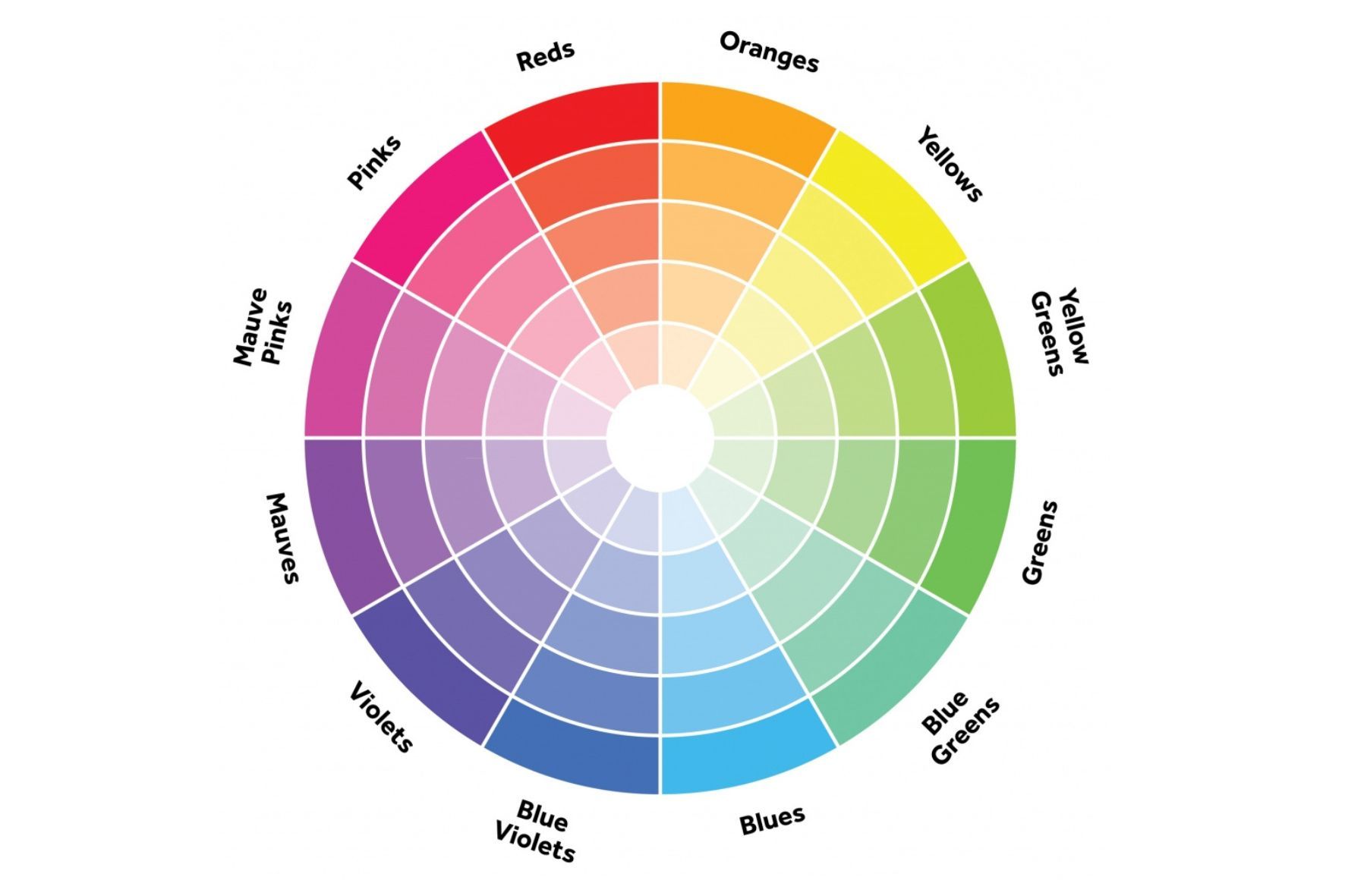Choosing the ideal paint color for any room can feel like a daunting task, but with a strategic approach, it becomes a creative and satisfying endeavor. This comprehensive guide will explore the steps to ensure that the paint color you select harmonizes perfectly with your space. By the end, you’ll be equipped with the knowledge and confidence to infuse your rooms with colors that resonate and inspire.
Find Inspiration Beyond Trends
Sources of Inspiration
The first step in choosing the perfect paint color is to find inspiration. There are countless sources to draw from, including other homes, Pinterest, magazines, and nature. Each of these sources offers unique perspectives and ideas that can help spark your creativity.
Homes and Showrooms
Visiting other homes, whether friends’ or model homes, can provide a real-life context for how different colors look in a space. Showrooms and open houses often showcase the latest trends and innovative color combinations that you might not have considered.
Online Resources
Online platforms like Pinterest , Instagram , and interior design blogs are treasure troves of inspiration. Create boards or collections to save the colors and styles that catch your eye. Pay attention to the context in which these colors are used, such as room size, lighting, and accompanying décor.
Magazines and Books
Interior design magazines and books are classic sources of inspiration. They often feature curated spaces by professional designers, complete with detailed descriptions of color choices and the reasoning behind them. Tear out pages or bookmark sections that resonate with you.
Nature
Nature is an abundant source of inspiration, offering a wide range of colors and combinations. Observe the changing colors of the seasons, the diverse hues in a garden, or the calming palette of a beach. Nature-inspired colors can bring a sense of serenity and timelessness to your space.
Balancing Trends and Personal Style
While trends can provide fresh ideas and keep your space modern, it’s essential to prioritize colors that resonate with your personal style and the ambiance you desire. A color might be trendy now, but if it doesn’t align with your taste, it won’t make you happy in the long run.
Timeless vs. Trendy
Consider whether you prefer a timeless look or something more current. Timeless colors, like neutrals and classic shades, offer longevity and versatility. Trendy colors can make a bold statement but might feel outdated sooner. Striking a balance between the two can ensure your space feels both current and enduring.
Mood and Ambiance
Think about the mood you want to create in each room. Soft, muted tones often evoke calm and relaxation, making them perfect for bedrooms and bathrooms. Bold, vibrant colors can energize a space, ideal for kitchens or playrooms. Reflect on how different colors make you feel and how they align with the purpose of the room.

Incorporate Existing Décor Elements
Using Existing Furnishings
Your existing furnishings play a crucial role in guiding your paint color choices. Items like large rugs, sofas, kitchen countertops, and cabinetry serve as anchors in your space, and your paint color should complement these elements.
Rugs and Upholstery: Rugs and upholstery often have patterns and colors that can inspire your paint choices. If you have a multicolored rug, pick one of its shades to use on your walls. This approach ensures cohesion and prevents the room from feeling too busy.
Countertops and Cabinetry: In the kitchen and bathroom, countertops and cabinetry are significant visual elements. Choose paint colors that complement these features. For example, if you have granite countertops with cool undertones, a wall color with a similar undertone will harmonize the space.
Creating a Cohesive Look
Aligning your paint choices with your existing décor helps create a cohesive and visually appealing atmosphere. It prevents clashes and ensures that all elements of the room work together seamlessly.
Color Palette Consistency: Maintaining a consistent color palette throughout your home creates a sense of unity. This doesn’t mean every room must be the same color, but there should be a harmonious flow from one space to the next. Choose a base color and build your palette around it, incorporating variations and complementary shades.
Accent Colors: Using accent colors is an excellent way to add interest and depth without overwhelming the space. These can be bold or subtle, depending on your preference. Accent colors can be introduced through accessories, artwork, or even an accent wall.
Master the Color Wheel
Understanding Color Theory
The color wheel is a fundamental tool in color theory, helping you create stunning color combinations. Understanding how colors interact can guide your choices and ensure a balanced and appealing outcome.
Complementary Colors: Complementary colors are situated opposite each other on the color wheel. They offer vibrancy and contrast, making each color stand out. Examples include blue and orange, red and green, or yellow and purple. Using complementary colors can create dynamic and lively spaces.
Analogous Colors: Analogous colors are next to each other on the color wheel. They produce a harmonious and unified appearance. Examples include blue and green, red and orange, or yellow and green. Analogous color schemes are pleasing to the eye and create a serene environment.
Practical Applications
Applying color wheel principles to your space involves selecting combinations that achieve your desired effect, whether it’s contrast or harmony.
Contrast for Energy: In rooms where you want to feel energized and stimulated, such as a home office or kitchen, complementary colors can be highly effective. The contrast between the colors can invigorate the space and keep you alert.
Harmony for Calm: For areas where relaxation and calmness are paramount, such as bedrooms or living rooms, analogous colors are ideal. The subtle variations between these colors create a soothing and cohesive look.

Decipher Undertones
Importance of Undertones
Undertones are the subtle hues that lie beneath the main color. They play a significant role in how a color appears and interacts with other elements in your space.
Cool vs. Warm Undertones: Colors can have cool or warm undertones, affecting their overall feel. Cool undertones often include shades of blue, green, or violet, creating a calm and refreshing ambiance. Warm undertones, with hints of red, orange, or yellow, bring warmth and coziness.
Identifying Undertones: To identify a color’s undertone, compare it to a pure white surface. This comparison often reveals the subtle hue that might not be immediately apparent. Additionally, many paint stores provide swatches that clearly indicate the undertone.
Harmonizing Undertones
Ensuring that your paint color’s undertones align with the undertones of your décor elements is crucial for a polished finish.
Matching Undertones: If your furniture and fixtures have warm undertones, choose a paint color with a similar warmth. This consistency creates a cohesive and inviting space. Similarly, match cool undertones with cool colors to maintain harmony.
Mixing Undertones: While matching undertones is generally a safe approach, mixing can also be effective if done thoughtfully. For instance, combining warm and cool tones can add depth and interest. Ensure there’s a balance, and use neutral colors to bridge the gap between different undertones.
Experiment with Paint Samples
Importance of Testing Samples
Experimenting with paint samples is a critical step in the color selection process. It allows you to see how a color looks in your specific environment and under your unique lighting conditions.
Acquiring Samples: Most paint brands such as Sherwin-Williams offer small sample sizes, making it easy to test several colors without significant expense. Select a range of shades and undertones to see how each interacts with your space.
Applying Samples: Paint large swatches on your walls to get a real sense of how the color will look. Observing the colors at different times of day, under natural and artificial light, helps you make an informed decision.
Living with Samples
Live with these samples for a few days to gauge their compatibility with your environment. Observing the colors in different lighting conditions helps in making an informed choice.
Daylight and Artificial Light: Colors can appear drastically different under various lighting conditions. A color that looks perfect in daylight might seem too dark or dull under artificial light. Pay attention to how the colors change throughout the day.
Contextual Evaluation: Consider how each color interacts with your existing décor and furniture. Does the color enhance these elements, or does it clash? Use this time to assess whether the color aligns with your vision for the space.

Trial Painting
Benefits of Trial Painting
Some paint brands offer paint can samples for trial purposes. Testing the chosen color on a small area allows you to witness how it interacts with the ambient light and other elements in the room.
Small Area Testing: Choose a small, inconspicuous area of the room to apply the sample. This approach lets you see the true manifestation of the paint color without committing to a full wall.
Observing Drying Process: Remember, the true manifestation of a paint color emerges only when it dries completely. Observe the color as it dries to see its final appearance. This step is crucial, as wet paint can look significantly different from its dried state.
Making Final Adjustments
Based on your observations, you might need to make slight adjustments to your color choice.
Fine-Tuning: If the color isn’t quite right, consider tweaking the shade or undertone. Sometimes, a slight variation can make a significant difference. Most paint stores can custom mix colors to help you achieve the perfect hue. Seeking
Second Opinions: Consult with friends or family members to get their impressions. They might notice aspects of the color that you overlooked. A fresh perspective can provide valuable insights.
Explore Lighting Variations
Impact of Lighting on Color
Acknowledging the influence of light on paint colors is essential. Both natural and artificial light sources can significantly alter the appearance of a color.
Natural Light: Natural light varies throughout the day and with the seasons. A color that looks bright and airy in the morning might appear more subdued in the afternoon. Consider the orientation of the room and how much natural light it receives.
Artificial Light: Artificial lighting, including the type and color temperature of bulbs, can change how a color looks. Warm lighting can enhance warm undertones, while cool lighting can make cool undertones stand out. Experiment with different lighting options to see which complements your chosen color.
Ensuring Consistency
Assess how your chosen hues interact with varying light conditions to ensure consistency in your desired ambiance.
Day-to-Night Transition: Ensure the color maintains its appeal from day to night. A color that looks great in daylight should still be pleasing under evening lighting. This balance is crucial for spaces like living rooms and kitchens, where activities occur throughout the day.
Room-Specific Lighting: Different rooms have different lighting needs. Task lighting in kitchens and offices, ambient lighting in living rooms, and mood lighting in bedrooms all impact how a color is perceived. Tailor your paint choices to the lighting in each room for the best results.
Making the Final Decision
Reflect on Your Options
After considering all the factors and testing samples, take time to reflect on your options. Visualize how each color will look in your completed space.
Visualization Tools: Many paint brands offer online visualization tools that allow you to upload photos of your room and digitally apply different colors. These tools can provide a helpful preview of the final look.
Mood Boards: Create mood boards combining paint swatches with images of your furniture, textiles, and décor. This visual representation can help you see how all elements will work together.
Confidently Choose Your Color
Empower your space with the perfect paint color that complements your style and enhances the atmosphere. By following these steps, you’ll confidently infuse your rooms with colors that resonate and inspire.
Final Considerations: Consider factors like maintenance and touch-ups. Some colors and finishes are more forgiving of marks and wear, making them better suited for high-traffic areas.
Professional Advice: If you’re still unsure, consulting with a professional interior designer or color consultant can provide expert guidance. They can offer insights based on their experience and help you avoid common pitfalls.
Enjoy the Transformation
Once you’ve chosen your color, enjoy the transformation of your space. Painting can refresh and renew any room, making it feel brand new. Add personal touches and accessories that complement your new paint color. This final layer of décor completes the look and makes the space truly yours.
By taking a thoughtful and strategic approach to choosing paint colors, you ensure that the end result is a space that reflects your style, meets your needs, and feels harmonious. Happy painting!
Tru Colors Contracting is the leader in affordable interior and exterior home painting services in the South Florida area with decades of experience. We’re a Florida Certified Building Contractor and experts in residential painting. We earnestly work to provide our clients in South Florida and Treasure Coast, with premium quality work and exemplary customer service. Each and every aspect of the home painting projects we work on, no matter how large or small, is managed with uncompromising attention to detail Above all, we’re a reputable and trustworthy company you can rely upon for all of your exterior and interior home paint projects. Contact Us today to discuss your project!
